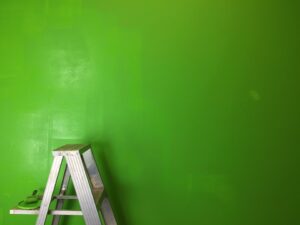Summer has finally arrived and it is time to get outside and enjoy it. It’s also the perfect weather to get started on those outdoor projects you have been dreaming up since the winter. It’s light out later and thanks to daylight savings time there it seems like there is even more time in the day. The extra dose of vitamin d gives us a needed energy boost to tackle even the largest projects. Like painting the exterior of your house.
There is no better time than now to grab a few paint cans and rollers and get to work. But before you go reaching for your ladder there are a few things to remember to get the result you want. Follow along for some summer painting tips to getting the most stunning paint results.
Does My House Need a Coat of Paint?
Painting is a big project, especially painting during the summer when you need to take into consideration humidity levels, and active weather patterns. So unless you are looking for an entire color change you may just need a strategic touch-up job. Here is what to look for when determining if it’s a full paint job, partial, or just a touch-up.
Interior Spaces
Whether or not an interior space needs a paint job is dependant on the space itself. Certain areas of the home are used more than others, these high traffic areas will need to be painted more frequently. The general rule-of-thumb includes,
- Kitchen – This space is used almost every day, it is prone to spills, messes, and deterioration. If you are coming close to 3 or 4 years since a paint job, then it’s time to grab a brush
- Bedroom – Although these areas are used every day, not much goes on to require a paint job every couple of years. Unless you are looking to change the color, you can probably skip this project for now.
- Hallways – These high-traffic areas are prone to dirt and grime, even with regular cleaning they can still become spotty. The extra cleaning can also wear down the paint. These are a perfect candidate for a summer refresh.
- Trim – Just like the hallways trim is prone to dirt and grime. From dirty handprints on door frames to splatter from muddy shoes these take a beating. If it is getting difficult to keep your trim clean, it might be time to paint.
Exterior Spaces
Not every house needs to be painted outside from top to bottom. Here are some tips to help you figure out if your exterior is in need of a fresh face.
- Paint is Fading – If you notice your paint fading it is time for a fresh coat of paint. This type of job will usually require full painting because it will be hard to match the paint colors.
- Paint is Cracking – If you notice paint cracking it is a sign it needs to be repainted.
- Date Since Last Paint – If a large amount of time has passed since your last paint job, it might be time for a fresh coat. Depending on the building material, your home should be painted every 4 to 15 years.
Tips for Painting During the Summer
Painting during any season has its advantages and its challenges. Here are a few tips for getting the job done this summer.
Summer Interior Painting
1. Use High-Quality Paints
Paints like the Benjamin Moore collection have a higher pigmentation to water ratio. This means they will cover more area with fewer coats than other paints on the market.
2. Prepare the Area
Walls should be cleaned, with products like T.S.P., to ensure the new paint coats the wall evenly. Be sure to remember to scrape off old paint build-up too, this will cause bumps and ridges in the freshly painted surface.
3. Cover the Area
Use drop cloths to protect furniture and floors. Plastic drop cloths are great, but the paint will not dry on them and it’s easy to still track paint around. Fabric cloths are reusable and will absorb the paint to prevent it from being tracked around the house.
4. Tape Frames
The best way to achieve a professional finish is through clean lines. Taping around frames and windowsills will give you that polished clean touch.
Summer Exterior Painting 
1. Use High-Quality Paints
Paints specially designed for outdoor use, like the top-quality paints from Benjamin Moore, should be your go-to. These paints have high pigmentation than other brands, which means they require fewer coats. Their outdoor paints are also designed to withstand all weather conditions and are fade resistant.
2. Monitor Weather Conditions
It can be challenging to fully predict the weather but pay attention to developing weather patterns before you start your painting project. Avoid painting in humid conditions as well. This will make it challenging for the paint to dry and any rain will cause the paint to splatter and run.
3. Paint Early in the Morning or in the Evening
Painting in direct sunlight is not only grueling but the sun can cause your paint to bubble as it dries. The mornings and evenings are cooler, and the paint will have time to dry without being scorched by the heat.
4. Prepare the Area
Most outdoor painting projects will require scraping or sanding of cracked and peeling paint. This seems like a tedious step but taking the time will ensure your new paint will dry evenly and be free from bumps and ridges.
Trust the Experts
Perhaps the best tip of all is to leave it to the experts. If you have a painting project you want to be completed but can’t seem to wrap your head around it, call the team at Cascadia. Our experienced, professional painters are serving the Greater Twin Cities Area and are ready for any project, big or small. For high-quality results from professionals, you can trust, Contact Us for your next interior or exterior painting project.
